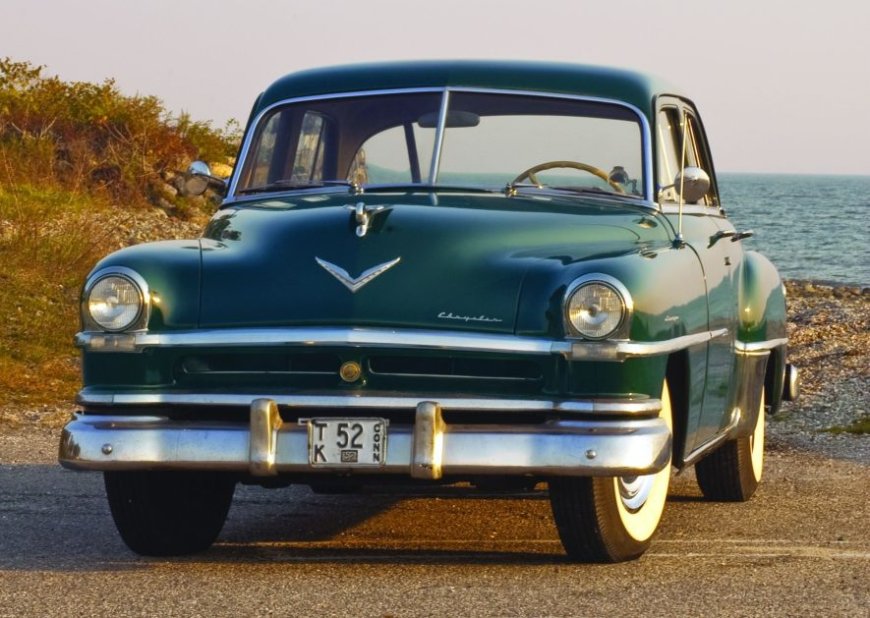The 1951 Chrysler Saratoga Is An Affordable Powerhouse From Post-War History
When Chrysler’s engineers set about developing the corporation’s first V-8 engine, they took nothing for granted in their quest for a superior design. They examined every type of engine then known—sleeve valves, rotary valves, two-strokes, and more—before settling on the conventional poppet valve. Further experimentation showed that a hemispherical combustion chamber would produce optimal power,… The post The 1951 Chrysler Saratoga Is An Affordable Powerhouse From Post-War History appeared first on The Online Automotive Marketplace.

When Chrysler’s engineers set about developing the corporation’s first V-8 engine, they took nothing for granted in their quest for a superior design. They examined every type of engine then known—sleeve valves, rotary valves, two-strokes, and more—before settling on the conventional poppet valve. Further experimentation showed that a hemispherical combustion chamber would produce optimal power, without the need for high-octane gasoline. And so, the Chrysler hemi was born.
The new V-8, which Chrysler called the FirePower, made its debut in 1951 in the New Yorker and Imperial, followed three months later by the Saratoga. Displacing 331-cu.in., it developed 180 horsepower at 4,000 rpm, bettering Cadillac’s 331-cu.in. OHV V-8 by 20 horsepower, and Lincoln’s 336-cu.in. flathead V-8 by 26. It was not only powerful, but durable, too, promising 100,000 miles of trouble-free service without so much as a valve job.
Built on the shorter wheelbase of the six-cylinder Windsor, the Saratoga was the hottest of the new hemi fleet, its lighter weight giving it a slight performance advantage over the Imperial and New Yorker. Like the rest of Chrysler’s 1951 line, it featured other technological advances, including ventilated drum brakes and a dual-range, four-speed Fluid-Matic transmission. (Fluid-Torque Drive, with a torque converter in place of the simple fluid coupling, was an extra-cost option.)





The exterior was a mild facelift of Charles G. Walker’s design for the 1949 Chryslers, which, if not racy, were handsome automobiles that provided generous interior room and good outward visibility. For 1951, the somewhat complex 1949-’50 grille was simplified, while the use of bright trim continued to be restrained. A minor change to the taillamp design to incorporate the backup lamp was all that was done to update the look for 1952.
Introduced three months after the other 1951 Chryslers, the Saratoga was offered as a two-door club coupe, a four-door sedan, and a Town and Country station wagon. With a $3,016 sticker, the Saratoga sedan was priced between Cadillac’s Series 61 and Series 62, but still a good deal more expensive than an Oldsmobile 88. A total of 45,500 Saratogas were built during the 1951 and 1952 model years—no breakout by year is available—with nearly 80 percent of those being four-door sedans.
With its superior power-to-weight ratio, it’s only natural that the Saratoga would be a frequent competitor in road racing and stock car racing. A Saratoga finished third in the 1951 La Carrera Panamericana in Mexico, completing the punishing, 1,934-mile race behind a pair of Ferrari 212 Inter coupes; another Saratoga won the over-2-liter class in Italy’s 1953 Mille Miglia, finishing ahead of a pair of Mark VII Jaguars. Chrysler’s first-ever NASCAR win came in August 1951 at the Michigan Fairgrounds, with Tommy Thompson at the wheel of a Saratoga. No doubt Carl Kiekhaefer, who’d campaigned his own Saratogas without much success in the Carrera Panamericana, was paying attention.
You might think that a landmark vehicle with a performance pedigree would be in high demand among collectors, but that’s not the case here. Over the past three years, just three have been offered for sale on Hemmings.com, with an average asking price of $14,247. Classics.com reports just one sale at auction over the past five years, a project car that sold for $5,500 in April 2021. That’s close to the $6,775 value reported by J.D. Power. The bottom line: You may need to be patient in your hunt, but you should be able to take home a nice example for not too much money.
Specifications – 1951 Chrysler Saratoga
Engine: OHV V-8, 331.1-cu.in., two-barrel carburetor, 180 hp at 4,000 rpm, 312 lb-ft of torque at 2,000 rpm
Transmission: Dual-range, four-speed automatic
Suspension: Front, coil springs, anti-roll bar, tubular shocks; Rear, semi-elliptic leaf springs, tubular shocks
Brakes: Four-wheel drums
Wheelbase: 125.5 inches
Curb weight: 4,018 pounds
Price new: $3,016-$3,215
Value today: $3,650-$11,650
The post The 1951 Chrysler Saratoga Is An Affordable Powerhouse From Post-War History appeared first on The Online Automotive Marketplace.











































